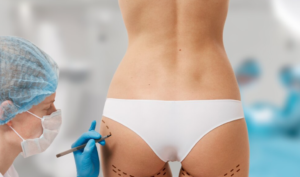Ensuring that individuals with disabilities have access to tools and technologies that allow for greater independence is crucial. One of the most beneficial advancements in this area is the hoist, a mechanical device designed to assist in the lifting and transferring of individuals with physical challenges. In this article, we explore how a hoist for disability plays a vital role in making the movement and transfer of the physically challenged easier and safer.
What Is a Hoist for Disability?
A hoist is a device used to lift and transfer individuals with mobility challenges, often from a bed to a wheelchair or between different levels such as from a chair to a bathtub. These hoists are generally designed to be simple to use, with either manual or electric mechanisms. The most common types are the ceiling hoist, which operates overhead, and the mobile hoist, which is portable and can be used in various locations.
The primary purpose of a hoist is to support caregivers in moving a patient with limited or no mobility safely and effectively while minimising the risk of injury to both the person being transferred and the caregiver. Hoists are typically used in medical, home, and care environments, providing a crucial solution for individuals who require assistance with mobility due to various conditions such as spinal cord injuries, neurological disorders, or elderly frailty.
How Does a Hoist Work?
Hoists generally operate through a lifting mechanism that uses either an electric motor or manual effort. A sling is attached to the hoist, and the person in need of assistance is gently lifted by the sling and moved from one location to another. The hoist can be positioned over a bed, wheelchair, bath, or chair, depending on the specific needs of the individual.
Electric hoists typically feature a battery-powered system that enables the caregiver to operate the hoist without physical effort. These hoists are equipped with controls that allow the caregiver to raise, lower, and manoeuvre the patient smoothly and gently, which reduces the risk of injury to both the person being lifted and the caregiver.
Benefits of Hoists for People with Disabilities
- Improved Safety: One of the most significant benefits of hoists is the reduction in the risk of injury for both the caregiver and the person being transferred. Manual lifting or transferring can cause physical strain, particularly for individuals who have to lift or move patients multiple times a day. Hoists eliminate the need for lifting heavy weights, which can lead to musculoskeletal injuries for caregivers.
- Increased Independence: For individuals with mobility challenges, hoists provide a sense of increased independence. With the use of a hoist, they can be moved between locations without needing constant physical assistance from caregivers.
- Comfort and Dignity: The transfer process using a hoist is typically much more comfortable than traditional manual methods. Instead of being physically lifted and carried, individuals are supported gently in a sling, which helps maintain their dignity and comfort.
- Versatility: Modern hoists are versatile and can be used in a variety of settings, including hospitals, care homes, and private residences. Mobile hoists can be moved around easily, while ceiling hoists are installed in a fixed location and can cover a larger area.
- Time Efficiency: Hoists make the process of transferring individuals much faster and more efficient. Caregivers can perform the necessary transfers in less time, which allows them to focus on other important aspects of care.
Final Thoughts
Hoists have become a vital tool in the world of disability care, providing significant benefits in terms of safety, comfort, independence, and efficiency. By integrating a hoist for disability into care routines, individuals with disabilities can experience improved quality of life, greater autonomy, and enhanced dignity during daily activities.







More Stories
Why Dr. Sudhir Mehta Is the Best Plastic Surgeon in Ambala
Industrial builders – needed for the economic growth of the country
Discover the Best Plastic Surgeon in Chandigarh for All Your Cosmetic Needs